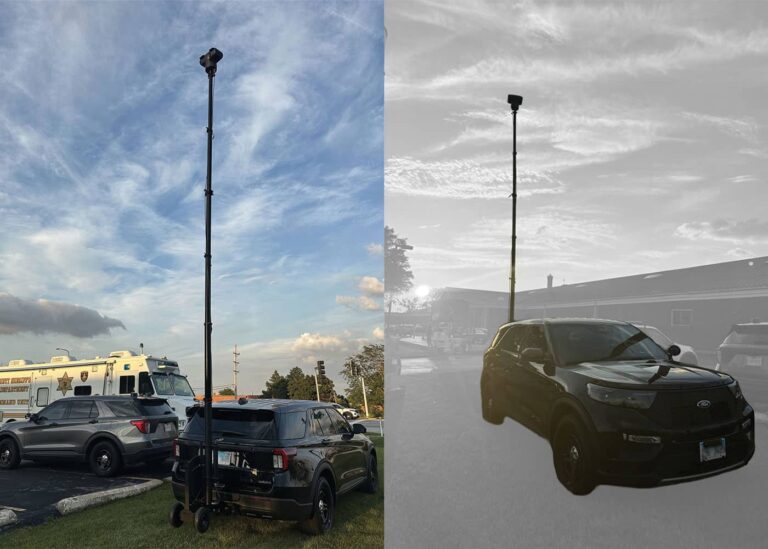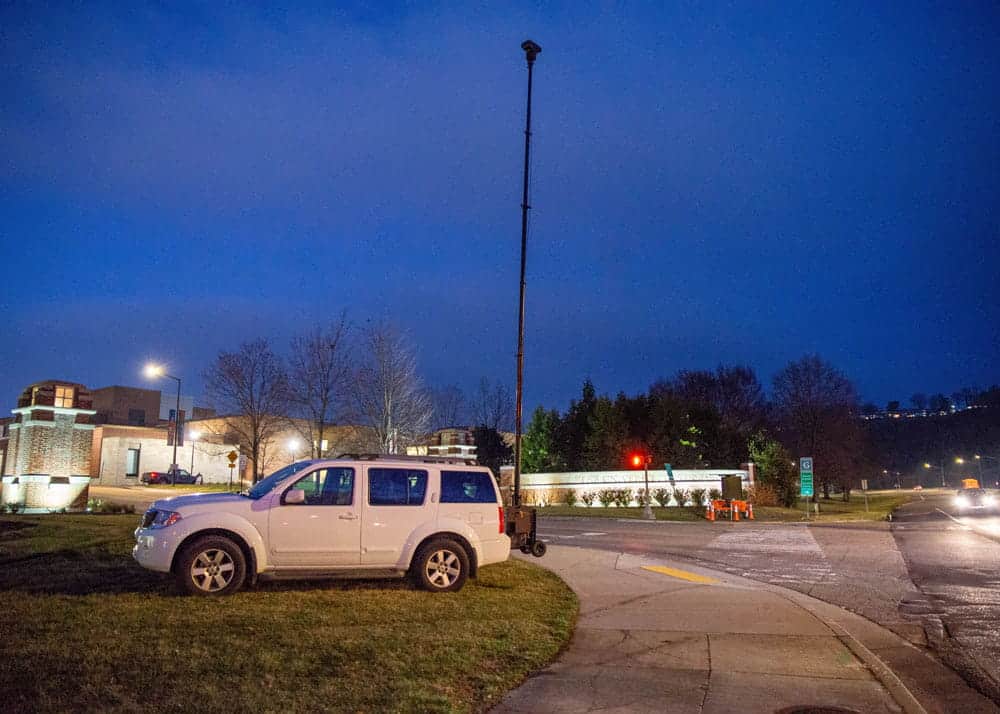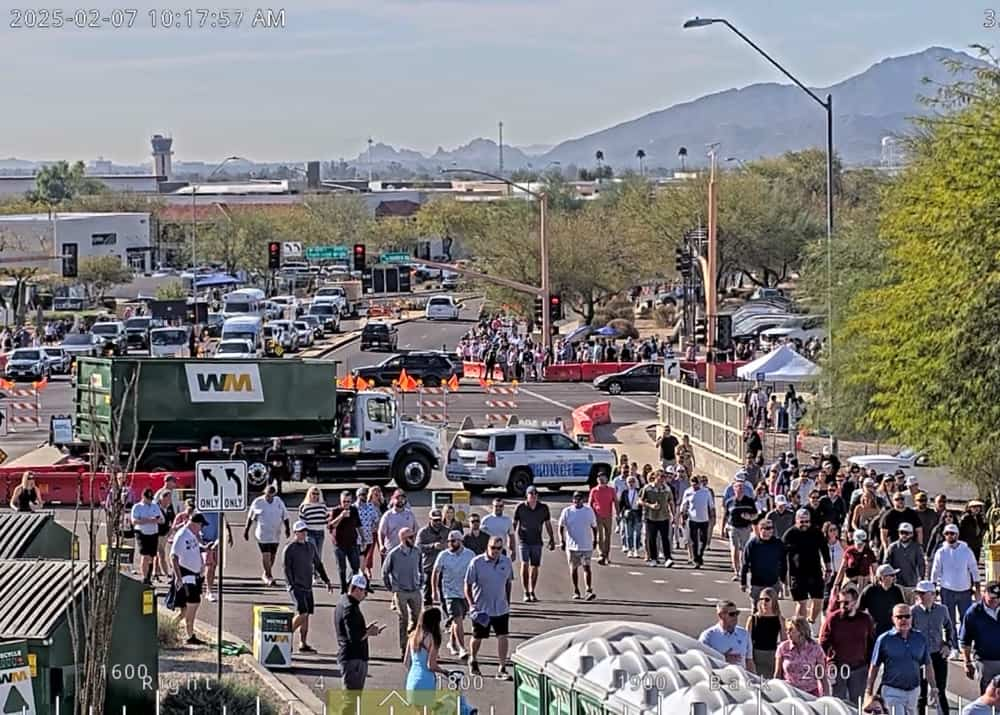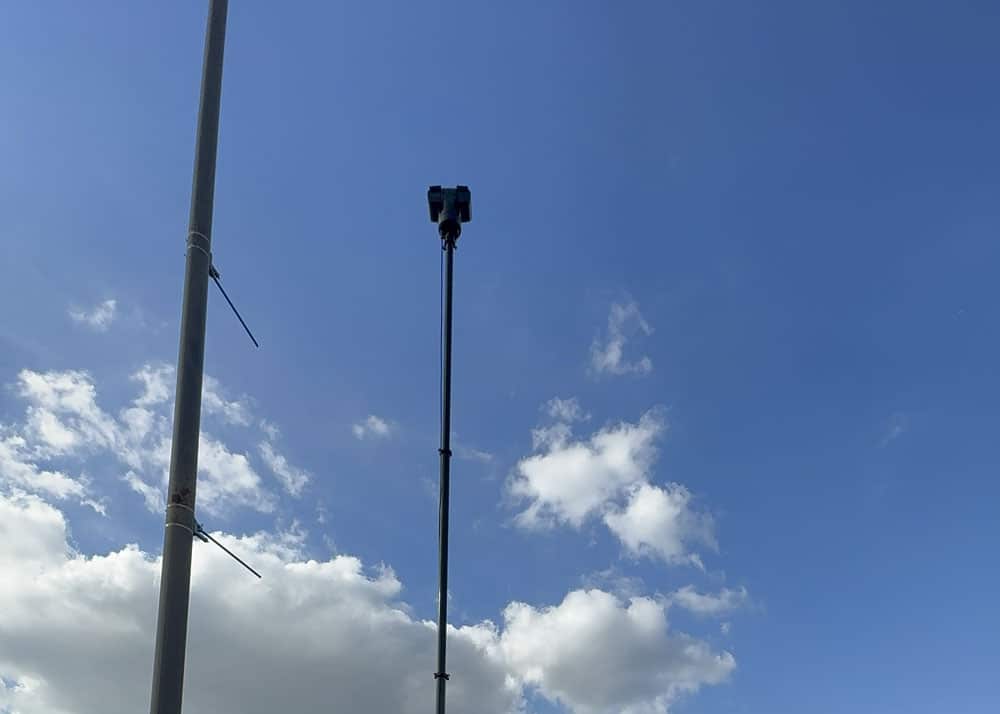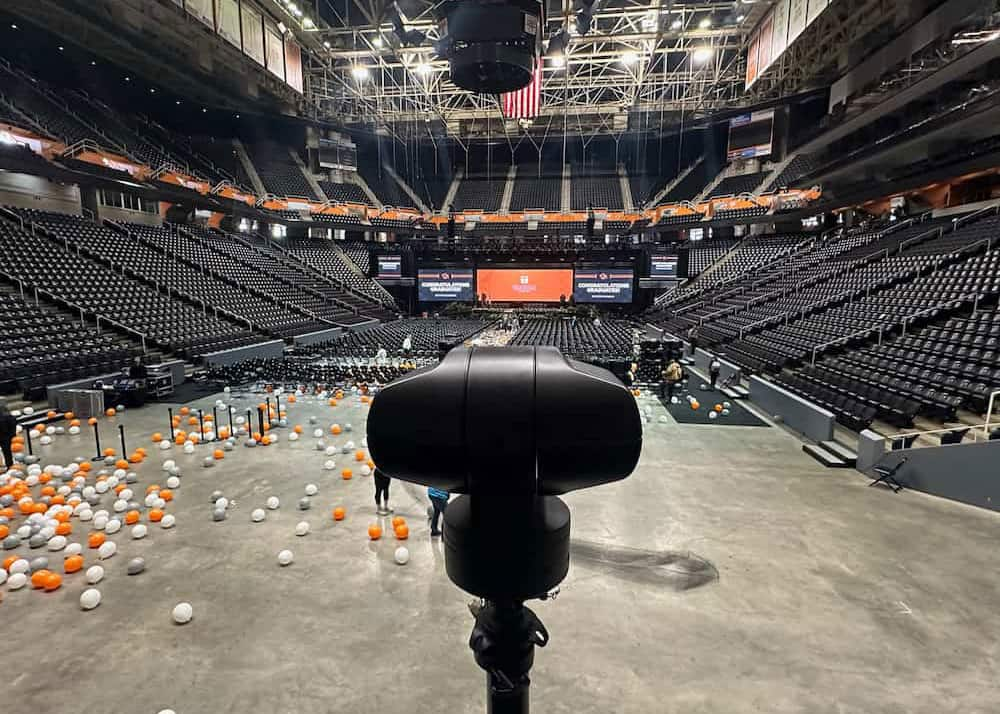Meeting Video Recording Needs at Roadside Safety Checks
In August, the Elk Grove Village Police Department in Illinois faced a unique operational challenge. As part of a multi-jurisdiction Roadside Safety Check (sometimes referred to as a DUI checkpoint), officers needed reliable video recording capabilities to meet documentation requirements. Traditionally, a squad car’s dash camera might fill that role. However, the team recognized a key limitation—dash cameras are locked to a vehicle’s line of sight, often providing a restricted and one-dimensional view.
For this safety check, Elk Grove Village PD turned to a different tool: The RATT, a hitch-mounted mobile video monitoring system designed to provide flexible, elevated coverage.
Sgt. Joshua Swoboda explained the department’s reasoning: “This was a multi-jurisdiction Roadside Safety Check. With requirements for video recording, this was a great tool to use in place of a squad dash camera, giving us a much better vantage point.”
The Challenge: Limited Field of View
Law enforcement agencies across the country often face the same issue at roadside checks: ensuring proper monitoring while maintaining officer safety and compliance with video documentation rules.
- Dash camera limitations: Mounted at bumper or windshield level, dash cams cannot always capture the full environment of a roadside checkpoint. Blind spots develop, and key activities may fall outside the lens.
- Operational constraints: Setting up traditional fixed video equipment requires additional resources, often slowing down deployment in time-sensitive operations.
- Multi-jurisdiction coordination: During large-scale safety operations, multiple agencies converge. Consistent monitoring becomes critical to ensure fairness, transparency, and officer protection.
Elk Grove Village PD needed a solution that could adapt quickly, integrate into existing safety protocols, and provide officers with a broader visual perspective.
The Solution: Deploying The RATT
The department leveraged The RATT (Rapid All-Terrain Tower), a mobile video monitoring system that mounts directly onto a patrol vehicle’s 2×2-inch hitch receiver.
Key Features Utilized at the Checkpoint
- Elevated mast: The system extended cameras above vehicle height, creating a bird’s-eye perspective of the checkpoint area.
- Rapid setup: Officers deployed the unit in minutes, without requiring extra infrastructure.
- Continuous video recording: The system satisfied the operation’s legal requirements for video documentation while providing coverage beyond what dash cams allowed.
- Multi-angle monitoring: Instead of being fixed forward, the elevated camera system allowed officers to oversee multiple lanes and entry points simultaneously.
This deployment highlighted how The RATT acts as a force multiplier—supporting, not replacing, established safety procedures. Officers maintained complete control of the checkpoint while the technology extended their visibility and recording capabilities.
The Results: Enhanced Oversight and Efficiency
The use of The RATT at the roadside safety check produced measurable improvements in efficiency and officer confidence.
- Expanded visual coverage: The elevated cameras provided a comprehensive view, allowing officers to monitor vehicle flow and officer interactions without blind spots.
- Improved compliance: Video documentation requirements were met seamlessly, ensuring accountability across all participating jurisdictions.
- Increased safety for officers: With a higher vantage point, supervisors could better oversee the operation and quickly respond to any developing situations.
Sgt. Swoboda emphasized the partnership-driven value of the deployment: “The system didn’t replace our procedures—it made them stronger. We could still run the safety check exactly how we always do, but with added visibility that helped everyone involved.”

Expert Perspective
Law enforcement technology specialists note that mobile video monitoring systems are becoming increasingly important in roadside operations. Unlike fixed systems, mobile platforms offer adaptability, ensuring that recording capabilities match the dynamic nature of field operations.
By integrating such technology into already established safety protocols, agencies gain flexibility without disrupting standard practices. This approach helps ensure that resources remain focused on public safety rather than being consumed by equipment setup or limited viewing angles.
Conclusion and Next Steps
The Elk Grove Village Police Department’s use of The RATT during their multi-jurisdiction DUI checkpoint demonstrates how mobile video monitoring enhances operational oversight without complicating existing procedures. By providing an elevated perspective, the system allowed officers to meet documentation requirements, improve field safety, and coordinate across agencies with confidence.
For agencies considering similar solutions, this case illustrates the practical benefits of integrating adaptable technology into roadside safety operations.
From roadside safety checks to large-scale community events, The RATT offers law enforcement and security personnel the tools to see more, document effectively, and work more efficiently.
From checkpoints to community events, mobile video monitoring delivers elevated visibility. Explore how The RATT can integrate seamlessly into your agency’s workflow.

